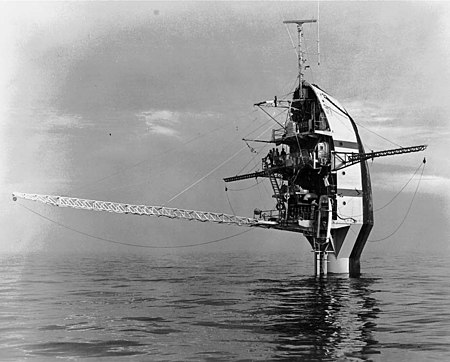Corporate liability
|
Read other articles:

3D printing technique Schematic representation of Stereolithography: a light-emitting device a) A laser or DLP selectively illuminates the transparent bottom c) of a tank b) filled with a liquid photo-polymerizing resin. The solidified resin d) is progressively dragged up by a lifting platform e) An SLA produced part An example of an SLA printed circuit board with various components to simulate the final product. Stereolithography (SLA or SL; also known as vat photopolymerisation,[1] opt…

Defisit anggaran Amerika Serikat, diproyeksikan hingga tahun 2022. Di Amerika Serikat, istilah jurang fiskal merujuk pada dampak ekonomi yang ditimbulkan oleh kenaikan pajak, pemotongan anggaran belanja, dan pengurangan anggaran lainnya terhadap defisit anggaran Amerika Serikat, yang secara potensial dimulai pada tahun 2013. Defisit–besarnya pengeluaran daripada penerimaan pemerintah–diduga akan berkurang pada pertengahan 2013. Kantor Anggaran Kongres memperkirakan bahwa penurunan tajam defi…

Cette cathédrale n’est pas la seule cathédrale Saint-André. CathédraleSaint-André de Bordeaux Entrée principale, façade nord. Présentation Culte Catholique romain Dédicataire Saint André Type Cathédrale Rattachement Archidiocèse de Bordeaux (siège) Début de la construction XIIe siècle Fin des travaux XVIe siècle Style dominant Gothique angevin Protection Classée MH (1862) Patrimoine mondial (1998) Site web www.cathedrale-bordeaux.fr Cathédrale Saint-…

American college football season 2012 Louisville Cardinals footballBig East co-championSugar Bowl championSugar Bowl, W 33–23 vs. FloridaConferenceBig East ConferenceRankingCoachesNo. 13APNo. 13Record11–2 (5–2 Big East)Head coachCharlie Strong (3rd season)Offensive coordinatorShawn Watson (1st season)Offensive schemePro-styleDefensive coordinatorVance Bedford (3rd season)Base defense4–3Home stadiumPapa John's Cardinal StadiumSeasons← 201…

Perovo Solar Park In Ukraine, the share of renewables within the total energy mix is less than 5%.[1]: 27 In 2020 10% of electricity was generated from renewables; made up of 5% hydro,[2] 4% wind,[3] and 1% solar.[4] Biomass provides renewable heat.[1]: 35 Progress towards targets Renewable energy Progress Report Ukraine, 2014-2020.[5][6][7] 2014 2015 2016 2017 2018 2019 2020 Renewable energy share …

Anarchism Project‑class Anarchism portalThis page is within the scope of WikiProject Anarchism, a collaborative effort to improve the coverage of anarchism on Wikipedia. If you would like to participate, please visit the project page, where you can join the discussion and see a list of open tasks.AnarchismWikipedia:WikiProject AnarchismTemplate:WikiProject Anarchismanarchism articlesProjectThis page does not require a rating on Wikipedia's content assessment scale. Anarchism WikiProject open…

Cet article concerne la cuve industrielle. Pour l'ustensile de cuisine, voir autocuiseur. Digesteur Diagramme de fonctionnement Informations générales Chaine d'assainissement Stockage et traitement Produits entrants Eaux uséesEaux brunesBoues d'épurationMatières organiques Produits sortants DigestatBiogaz Niveau d'application VoisinageMénagesMunicipal Traitement Étape PrimaireSecondaire Procédé Biologique (anaérobie) modifier Un digesteur, aussi appelé réacteur à biogaz ou méth…

جزء من سلسلة مقالات حولالله في الإسلام مصطلحاتالتسبيح: سبحان الله التكبير: الله أكبر الحمد: الحمد لله التشهّد: لا إله إلّا الله تعابير مرتبطة جلَّ جلاله سبحانه وتعالى عزَّ وجلّ أخرى إنَّا لله بسم الله إن شاء الله ما شاء الله استغفر الله لا حول ولا قوة إلا بالله جزاك الله أعوذ �…

Artikel ini sebatang kara, artinya tidak ada artikel lain yang memiliki pranala balik ke halaman ini.Bantulah menambah pranala ke artikel ini dari artikel yang berhubungan atau coba peralatan pencari pranala.Tag ini diberikan pada Desember 2022. Sejarah US Nama FLIPPemilik Office of Naval ResearchOperator Scripps Institution of OceanographyPembangun Gunderson Brothers EngineeringSelesai 1962Identifikasi list error: <br /> list (help)Kode panggil: WI7115MMSI no.: 338040561Status BeroperasiC…

NGC 4307 جزء من عنقود العذراء المجري الكوكبة العذراء[1] رمز الفهرس NGC 4307 (الفهرس العام الجديد)MCG+02-32-012a (فهرس المجرات الموروفولوجي)IRAS F12195+0919 (IRAS)IRAS 12195+0919 (IRAS)PGC 40033 (فهرس المجرات الرئيسية)UGC 7431 (فهرس أوبسالا العام)2MASX J12220562+0902367 (Two Micron All-Sky Survey, Extended source catalogue)VCC 524 (Virgo Cluster Catal…

Iglesia de San Pedro y San Ildefonso Bien de interés culturalPatrimonio histórico de España LocalizaciónPaís España EspañaComunidad Castilla y León Castilla y LeónProvincia ZamoraZamoraLocalidad ZamoraDatos generalesCategoría MonumentoCódigo RI-51-0003938Declaración 1974Construcción Siglo XI - Siglo XVIIIEstilo Románico en origen, muy modificado en épocas posteriores.[editar datos en Wikidata] La iglesia Arciprestal de San Pedro y San Ildefonso, es un…

Technique in molecular biology Site-directed mutagenesis is a molecular biology method that is used to make specific and intentional mutating changes to the DNA sequence of a gene and any gene products. Also called site-specific mutagenesis or oligonucleotide-directed mutagenesis, it is used for investigating the structure and biological activity of DNA, RNA, and protein molecules, and for protein engineering. Site-directed mutagenesis is one of the most important laboratory techniques for creat…

2017 fire in West London Grenfell Tower fireThe fire during the early morning hours of 14 June 2017Grenfell TowerShow map of Royal Borough of Kensington and ChelseaGrenfell TowerShow map of Greater LondonGrenfell TowerShow map of the United KingdomDate14 June 2017; 6 years ago (2017-06-14)Time00:54 BST (first emergency call)Duration24 hours (under control)Over 60 hours (fully extinguished)LocationGrenfell Tower, North Kensington, London, United KingdomCoordinates 51°30′50″…

State of Austria State in AustriaLower Austria Niederösterreich (German)Niedaöstareich (Bavarian)State FlagCoat of armsAnthem: Niederösterreiche LandeshymneCountry AustriaCapitalSankt PöltenGovernment • BodyLandtag of Lower Austria • GovernorJohanna Mikl-Leitner[1] (ÖVP) • Deputy GovernorUdo Landbauer (FPÖ) [1]Area • Total18,901.2 km2 (7,297.8 sq mi)Population (1 January 2022) • T…

County in Indiana, United States County in IndianaDecatur CountyCountyDecatur County Courthouse in GreensburgLocation within the U.S. state of IndianaIndiana's location within the U.S.Coordinates: 39°18′N 85°30′W / 39.3°N 85.5°W / 39.3; -85.5Country United StatesState IndianaFoundedDecember 12, 1821 (authorized)1822 (organized)Named forStephen Decatur, Jr.SeatGreensburgLargest cityGreensburgArea • Total373.32 sq mi (966.9 km2)&…

BMJ redirects here. For other uses, see BMJ (disambiguation). British peer-reviewed medical journal Academic journalThe BMJDisciplineMedicineLanguageEnglishEdited byKamran AbbasiPublication detailsFormer name(s)Provincial Medical and Surgical Journal, British Medical Journal, BMJHistory1840–presentPublisherBMA (United Kingdom)FrequencyWeeklyOpen accessImmediate, research articles onlyLicenseCreative Commons Attribution Non-commercial LicenseImpact factor107.7 (2022)Standard abbreviat…

Self-adhesive postage stamp This article needs additional citations for verification. Please help improve this article by adding citations to reliable sources. Unsourced material may be challenged and removed.Find sources: Self-adhesive stamp – news · newspapers · books · scholar · JSTOR (March 2020) (Learn how and when to remove this message) 2005 self-adhesive stamp of Deutsche Post. (450 years after Augsburger Religionsfrieden) A self-adhesive stamp is…
Bubenreuth. Bubenreuth adalah kota yang terletak di distrik Erlangen-Höchstadt di Bavaria, Jerman. Kota Bubenreuth memiliki luas sebesar 4.13 km². Bubenreuth pada tahun 2006, memiliki penduduk sebanyak 4.470 jiwa. lbsKota dan kotamadya di Erlangen-HöchstadtAdelsdorf | Aurachtal | Baiersdorf | Bubenreuth | Buckenhof | Eckental | Gremsdorf | Großenseebach | Hemhofen | Heroldsberg | Herzogenaurach | Heßdorf | Höchstadt an der Ai…

Louis de SancerreBlasoneNascita1341 o 1342 MorteParigi, 6 febbraio 1402 Cause della mortemalattia Luogo di sepolturaBasilica di Saint-Denis, Parigi ReligioneCattolicesimo Dati militariPaese servitoRegno di Francia Forza armataArmée française ArmaArmata di Guienna Anni di servizio1359-1399 GradoConnestabile di Francia ComandantiBertrand du Guesclin Olivier V de Clisson GuerreGuerra dei cent'anni CampagneCampagna di Guienna BattaglieAssedio di Melun Difesa di Sancerre Battaglia di Pontv…

Institutional corruption in the country Political corruption Forms and concepts Bribery Cronyism Economics of corruption Electoral fraud Elite capture Influence peddling Kleptocracy Mafia state Nepotism Pyrrhic defeat theory Slush fund Simony State capture State-corporate crime Throffer Anti-corruption International Anti-Corruption Court Group of States Against Corruption International Anti-Corruption Academy International Anti-Corruption Day United Nations Convention against Corruption Corrupti…